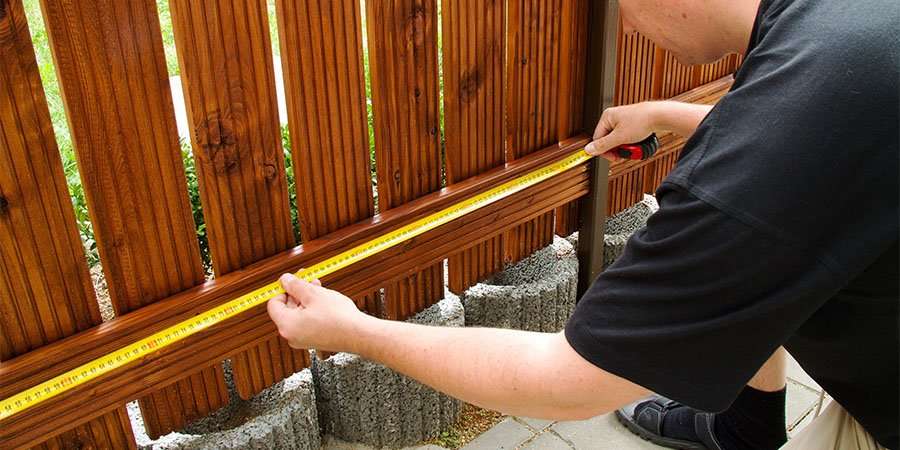All Categories
Featured

Amongst the most popular choices, wood, plastic, and light weight aluminum each deal unique advantages and drawbacks. Right here's a breakdown of the pros and disadvantages of these 3 common fence materials.
Wood Fencing. Timber fencing has actually been a classic selection for home owners due to its all-natural charm and versatility.
Pros:. Aesthetic Appeal: Timber supplies a timeless and warm appearance that matches a selection of architectural styles. Customizable: It can be painted, stained, or cut right into unique designs to fit personal preferences. Economical: At first, wood fencing can be a budget friendly option contrasted to various other materials. Eco-Friendly: Timber is a renewable energy and can be sustainably sourced. Cons:. High Maintenance: Wood requires regular securing, discoloration, or paint to avoid rot, insect damages, and weathering. Resilience Issues: Without correct care, wood can warp, split, or degeneration with time, specifically in locations with high moisture. Much shorter Life expectancy: A timber fence generally lasts 10-20 years, relying on the kind of wood and degree of upkeep. Timber is suitable for those who value a traditional look and are eager to dedicate to its maintenance.
Plastic Fence. Plastic is a contemporary, low-maintenance fencing choice that has actually grown in popularity recently.

Pros:. Reduced Maintenance: Plastic does not call for painting, discoloration, or securing and can be quickly cleansed with soap and water. Climate Resistant: It holds up against harsh weather without decaying, rusting, or warping. Resilient: Plastic fences can last 20-30 years with minimal upkeep. Variety of Styles: Available in lots of shades, styles, and structures, some plastic alternatives mimic the look of wood. Disadvantages:. Greater Upfront Cost: Plastic secure fencing can be more expensive initially contrasted to wood. Brittleness in Winter: In severe chilly, vinyl might break or come to be fragile. Minimal Services: Private panels can be tough to replace, calling for careful matching to the existing fence. Vinyl is ideal matched for property owners seeking a resilient, low-maintenance remedy with modern-day aesthetic appeals.
Aluminum Fence. Light weight aluminum fencing is a resilient and lightweight option, frequently selected for its contemporary appearance and flexibility.
Pros:. Rust-Resistant: Light weight aluminum does not corrosion, making it an outstanding selection for humid or damp climates. Low Maintenance: Needs very little maintenance and is simple to clean. Sturdy: While light-weight, aluminum is solid sufficient to endure lots of environmental problems. Lengthy Lifespan: Can last numerous years without significant wear or damage. Selection of Styles: Uses a sleek and stylish look, usually used for decorative or decorative purposes. Disadvantages:. Greater Price: The first investment for light weight aluminum secure fencing is more than timber or plastic. Less Privacy: Aluminum fences are usually created with open pickets, making them less effective for privacy. Vulnerable to Dents: Although durable, light weight aluminum can be nicked by strong effects. Light weight aluminum is perfect for those seeking a fashionable, durable alternative that requires marginal treatment.
Making the Right Option. Each fencing material-- timber, vinyl, and aluminum-- supplies distinctive benefits and downsides. Your choice must depend upon your specific priorities, such as budget plan, upkeep preferences, climate, and visual objectives:
If you enjoy a typical appearance and do not mind routine maintenance,Pick timber. Choose for plastic if you desire a low-maintenance, weather-resistant fence with modern allure. Select aluminum if you focus on resilience, corrosion resistance, and a streamlined style. By weighing these cons and pros, you can select a fencing product that enhances your home while meeting your practical demands.
Latest Posts
Discover Affordable Auto Repairs with Montclare’s Exclusive Service Specials
Published en
1 min read
Check Out Montclare Auto Repair’s Highly Requested Auto Repairs and Why Drivers Choose Them
Published en
1 min read
Find Out Why Chicago Drivers Choose Montclare Auto Repair for Dependable Service and Big Savings
Published en
1 min read
More
Latest Posts
Discover Affordable Auto Repairs with Montclare’s Exclusive Service Specials
Published May 27, 25
1 min read
Check Out Montclare Auto Repair’s Highly Requested Auto Repairs and Why Drivers Choose Them
Published May 25, 25
1 min read
Find Out Why Chicago Drivers Choose Montclare Auto Repair for Dependable Service and Big Savings
Published May 24, 25
1 min read